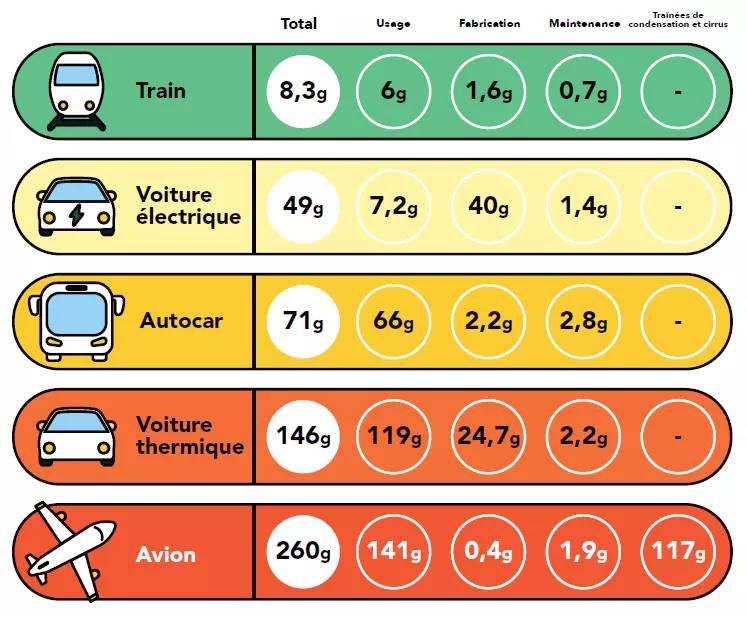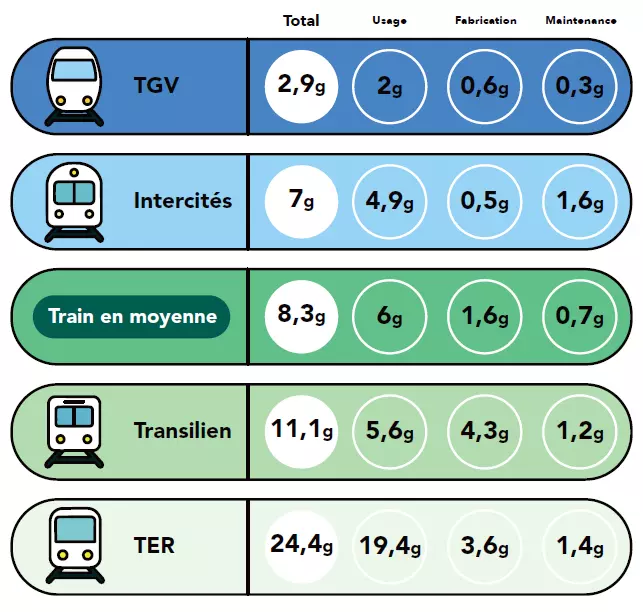CSR and Transitions

Calculating the carbon footprint of transportation
In France, the transport sector is the biggest emitter of greenhouse gases, accounting for a third of all emissions. By transporting 10% of passengers for less than 1% of the sector's GHG emissions, rail is a solution for sustainable mobility.
Header : © ©ShutterStock
Carbon comparator for different modes of transport : © SNCF Voyageurs
Infographic : © SNCF Voyageurs
The calculation method : © SNCF Voyageurs
Discover also : © Com à l'écran / ©SNCF Voyageurs / Alex Profit





